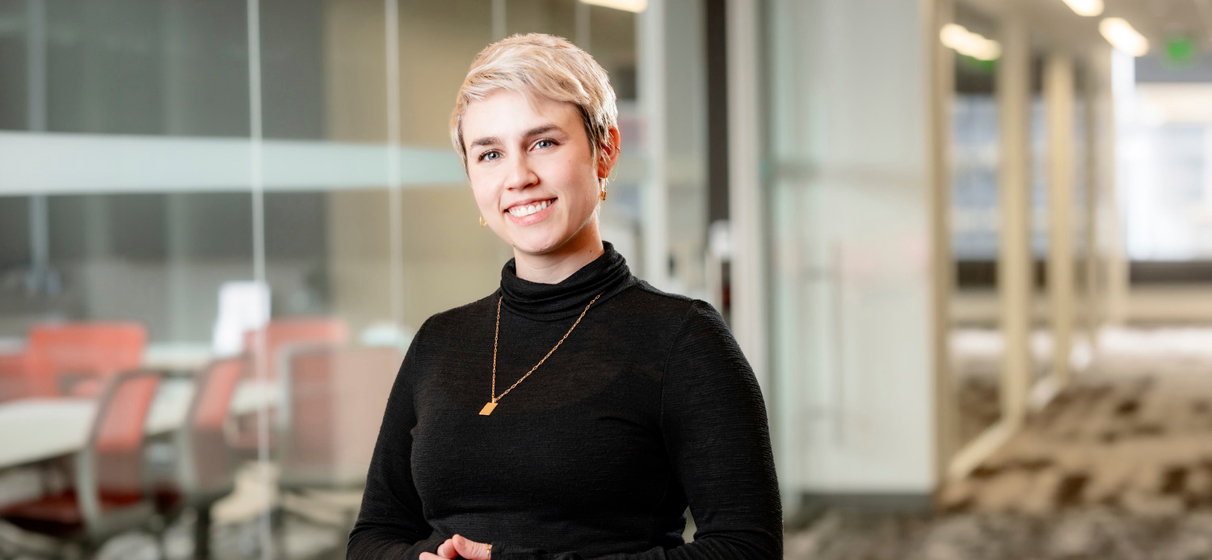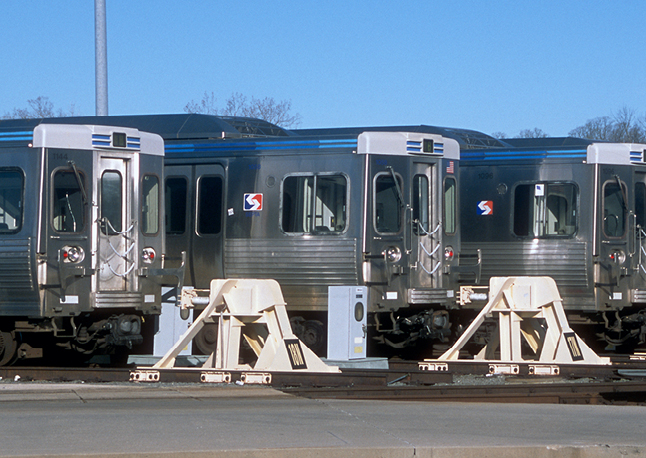This year’s American Public Transportation Association (APTA) Rail Conference in Cleveland, OH, brought together more than 1,500 public transportation professionals for sessions and workshops addressing major priorities facing all modes of rail transportation.
STV Engineering Specialist Lauren Garoppo was one of several members of the organization’s delegation at this year’s conference. Garoppo is currently the secretary of APTA’s Rolling Stock Equipment Technical Forum and a member of the APTA’s Emerging Leaders Program Class of 2025. Here, she discusses some of industry trends that were unveiled in some of the technical sessions, as well how the professional benefits of attending the conference as a participant in such a prestigious leadership program.
1. What were some of the key issues and trends that were raised in the session you moderated, “Optimization of Rolling Stock Maintenance?”
This panel took an insightful look at some of the distinct types of maintenance data that are used to ensure the reliability of rolling stock. As digital technology continues to evolve, more rail agencies are leveraging data to help them perform preventive and corrective maintenance to better optimize rolling stock. Using data like this allows our clients to view their maintenance schedules through a new lens. We can now collect real-time information digitally about various vehicle components like engines, brakes, and wheels and then analyze that data to schedule maintenance proactively and reduce the likelihood of breakdowns or other issues. Similarly, we can now use digital technology to continuously monitor vehicle assets for wear and tear and other anomalies to extend the life of components by avoiding premature replacement. To better wrap our arms around long-term trends or recurring concerns involving certain rolling stock components, we are seeing more agencies turn to data analytics to not only address these issues but to also optimize inventory management to identify new and replacement parts and reduce costs. We’re basically using new technology to solve age-old problems more effectively.
We can now use digital technology to continuously monitor vehicle assets for wear and tear and other anomalies to extend the life of components by avoiding premature replacement.
Lauren Garoppo
2. What kind of platform does the APTA Rail Conference provide you to have a dialogue about rolling stock and other matters important to your work at STV?
My role on APTA’s Rolling Stock Equipment Technical Forum for the past year has provided me with access to several industry-leading voices in rolling stock, from the consulting, agency, and supplier spheres. However, being able to participate in a panel in one of the largest rail conferences in the country, provides me with unmatched access to ideas and contacts. The conference is filled with officials from rail agencies, as well as partnering consultancy firms, leading to a free flow of ideas, whether it be about trends in project delivery, new industry innovations, or even something like how to better identify suppliers that will support our rolling stock procurement efforts.
3. How was being a part of this year’s APTA Emerging Leaders Program color your experience at the conference?
It’s such an honor to be a part of the Emerging Leaders Program Class of 2025. Attending this APTA Rail Conference this year as an Emerging Leaders Program participant provided tremendous value to me professionally, as well as added a layer of excitement to the week. The conference marks the “kick-off” for the program, so there was 35 of us in attendance, all representing different facets of the industry and parts of the county. I was one of two representatives from the vehicle-specific side of the industry, but there were also participants with backgrounds in bus transit, legislative affairs, safety, security and more. Having such a diverse group led to a lot of good information being shared. We attended sessions that gave us more insights about certain leadership and networking skills. We even got to wear designated ribbons for the program, which created a real sense of community and connectivity for the participants.







